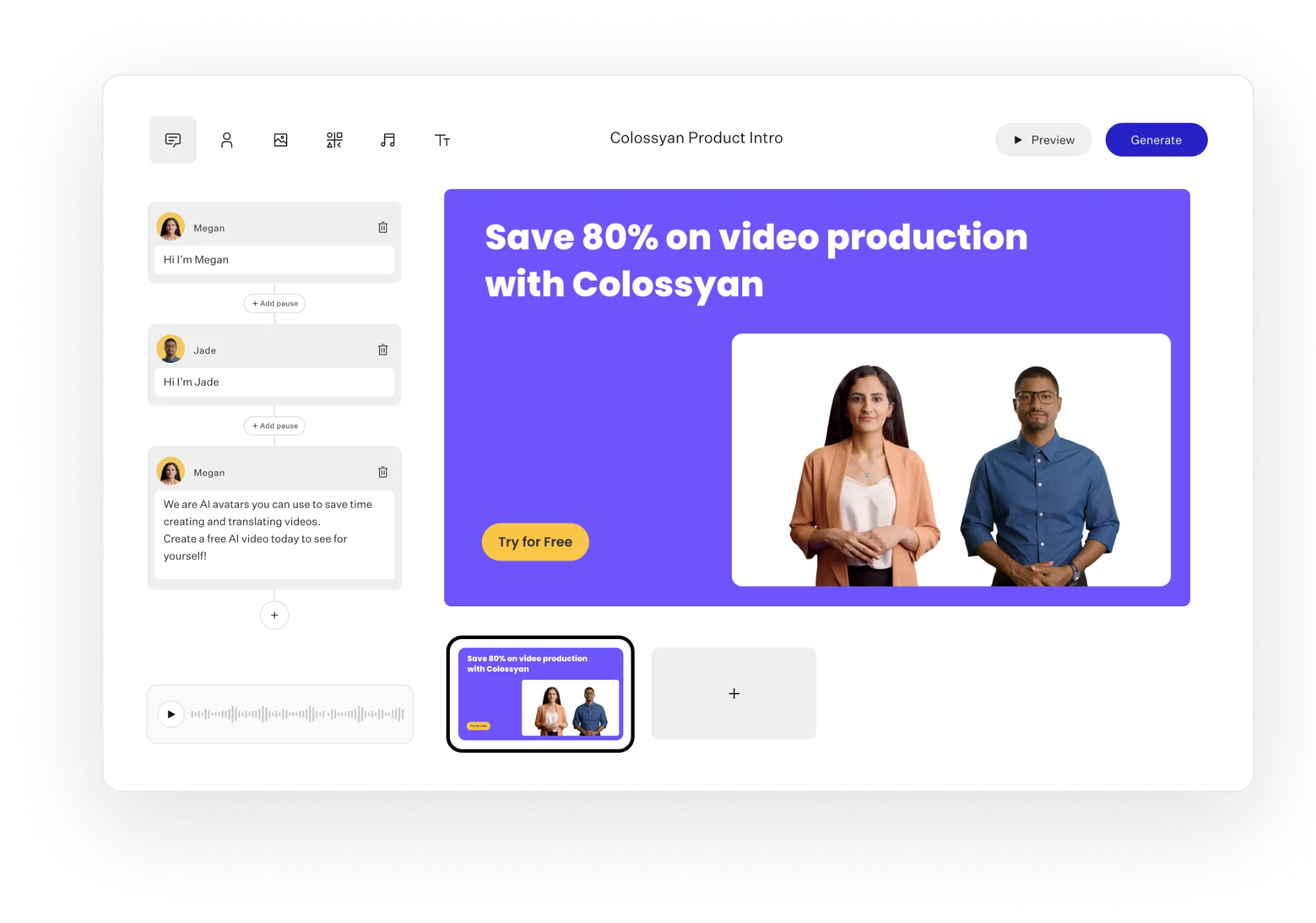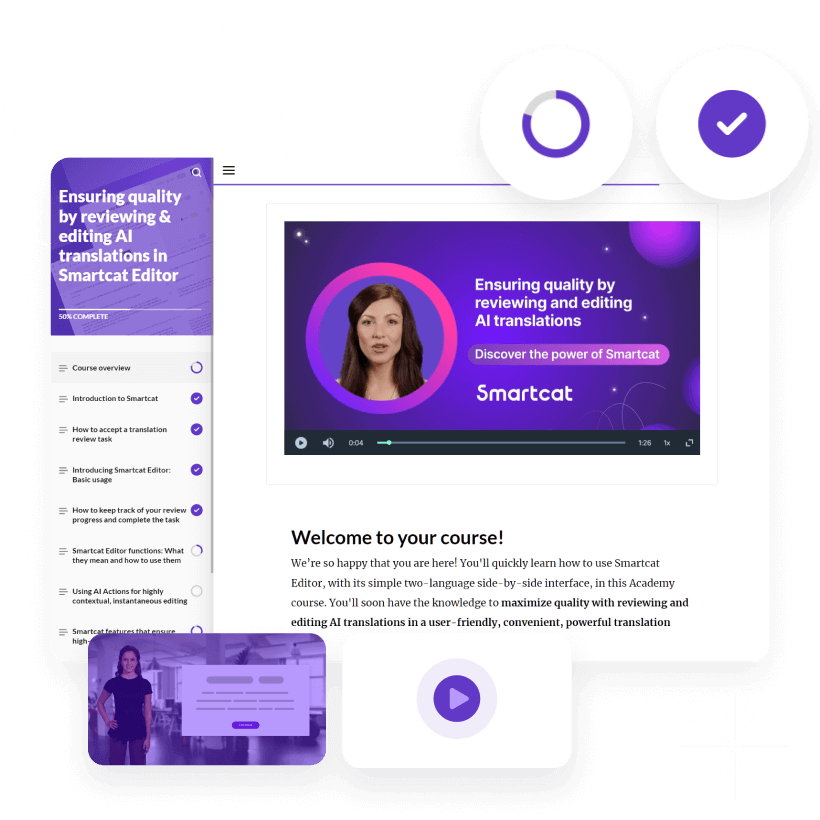
5 Best Video Translation Tools For Global Teams

Working with global teams means sharing knowledge with people who don’t all speak the same language. For Learning & Development, enablement, and marketing teams, that creates a daily headache: how do we localize video content fast, accurately, and at a price that doesn’t blow the budget? The latest AI video translation tools promise a shortcut. But not all deliver what global teams really need: solid accuracy, lip-sync that isn’t distracting, voiceover that matches real speakers, controls for compliance and review, and simple workflows that scale.
I’ve picked five tools that actually work for teams running learning or comms projects at enterprise scale. I’m not ranking by hype. I’m looking at what matters: language coverage, lip-sync realism, subtitles and SRT/VTT handling for your LMS or SEO, voice and brand consistency, review options, compliance, cost, and how they fit in an enterprise video workflow - especially with tools like Colossyan, where I work.
Here’s how it works.
Colossyan

Colossyan is built for teams that want to translate and fully produce training videos at scale - not just dub them. Instead of starting with a finished video, you can upload a document, PPT, or script and instantly generate an on-brand training module with avatars, scenes, and quizzes. Translation is built directly into the authoring workflow: click Add New Language Variant, and Colossyan translates scripts, on-screen text, captions, and quiz questions across all scenes.
Colossyan supports 80+ languages with consistent voices, accurate pronunciation controls, and optional voice cloning for teams who want to maintain a recognizable speaker across global markets. Subtitles (SRT/VTT) and SCORM export make it easy to push localized content to any LMS and keep tracking consistent by region. For teams building 10, 50, or 500 versions of the same training, this unified workflow saves enormous time.
Teams report cutting video creation time by 6–10x and reducing localization cycles from weeks to hours. The main limitation is that Colossyan is designed for full training production rather than precision lip-sync dubbing of live-action footage - but for L&D, onboarding, compliance, and enablement, that’s usually a benefit, not a drawback.
I see global teams use Colossyan as the hub for all master training content: build the core module, translate at scale, export SCORM for their LMS, and then use niche tools (Smartcat for regulatory linguistic review, HeyGen for hyper-real segments, or Kapwing for social snippets) only when needed. Colossyan keeps the look, feel, and analytics consistent across regions while allowing flexibility in your overall workflow.
Heygen

HeyGen is popular for global marketing and comms. It covers 175+ languages and dialects, and gives you two flavors: “hyper-realistic” (full lip-sync plus audio, great for on-camera presenters) or pure audio dubbing (faster when faces aren’t front and center). Their enterprise clients use proofreading services for mission-critical translations, and the embed-ready multilingual player makes sharing across markets easier.
HeyGen claims up to 80% savings on translation costs, 1 day turnaround per video (not weeks), and Trivago says they localized TV ads into 30 markets and cut post-production by 50%, saving 3–4 months per campaign. The main trade-off: hyper-realistic lip-sync can be slower, and you’ll run into time limits on free/premium plans.
Best for brand videos, executive announcements, and any content where viewers see a real person talk - and staying on-message across many markets is do-or-die.
At Colossyan, I see a lot of teams use our authoring tools to script, translate, and record avatar-based or talking-head modules, then push those out to HeyGen for lip-sync-heavy announcement segments. You get the best of both: a fast authoring/analytics workflow with Colossyan, and hyper-realism from HeyGen when that’s needed.
Smartcat

Smartcat is built for companies who need airtight compliance, language coverage, and review loops. It supports 280+ languages and 80+ file types, with a marketplace of vetted linguists for review or brand checks. In practice, teams see about 95% first-pass AI translation accuracy, up to 400% faster turnaround, and 10x content scaling compared to human-only workflows.
Brands like Smith+Nephew and Wunderman Thompson say they speed up time-to-market by 4x or push out 30% more translation on the same budget. Smartcat’s AI dubbing is about 10–30% the cost of traditional localization. It handles overlapping speakers (for panel or group training videos) and its security is strong - SOC II, robust encryption, mobile/cloud, and unlimited seats for scaling across business units.
Downsides? The more you lean on human review, the more cost and time you add. But for compliance, regulated training, or when you need flawless terminology, that’s a price many pay.
A lot of teams I work with at Colossyan use us to author and version the master training files, export SRT/VTT, and run those through Smartcat for specialized review. Once translated and verified, they bring those files back for on-brand styling, SCORM export, and analytics. You get consistent video look/feel with local accuracy and trackable learning outcomes.
Kapwing

Kapwing’s niche is fast, flexible video localization at scale - subtitles in 100+ languages, AI dubbing in 40+ with 180 AI voices, and tools to enforce translation rules, consistent pronunciations, and granular timing across lots of clips.
What’s surprising: up to 99% subtitle accuracy, strong ratings, and smart feedback from millions of users. For L&D, it matters that 72% of people will buy when info’s in their language, and bilingual training can boost productivity by 15%. India’s YouTube views are nearly 2x the US; only about 10% of the world are native English speakers - localization affects revenue and reach.
Kapwing’s free plan is for light use and adds a watermark; “Pro” unlocks longer videos and voice cloning. Dubbing language coverage is smaller than subtitle languages.
I like starting L&D projects in Colossyan (to keep workflow, brand, and SCORM tracking in one place) and using Kapwing as a final styling/terminology pass if you’re cutting hundreds of snippets across regions. Export SRT/VTT for each language, clean up in Kapwing, and keep your master versions in Colossyan.
Adobe Firefly Translate Video

This is Adobe’s answer for teams already in Creative Cloud who want voice matching and a clean handoff to social channels. Firefly supports 20+ languages. The key trick: it preserves the tone, cadence, and acoustics of the original speaker (for up to five target languages per upload) and offers enterprise lip-sync. It auto-detects the source language, and you get outputs in minutes through a download/share queue.
Limitations: uploads are capped at 5 minutes, and re-translating back can lose nuances. It works best for quick internal updates or branded segments that need the original speaker voice - think social highlights, branded intros, or B2B snippets.
In the Colossyan ecosystem, I see teams use us for the longer, interactive, tracked content - and break out short, high-visual assets to push them through Firefly, then reintegrate results back into the main learning experience.
Not one-size-fits-all: other honorable mentions
If you need something lighter or have special file/price needs, Vidnoz, Akool, Clideo, and even Google Workspace Add-on (Video Translator) are all worth exploring. Some focus on subtitle speed and price, some on hyper-realistic single-speaker videos. Always check for file/length quotas, lip-sync support, and how easy it is to edit/output SRTs.
A sample workflow with Colossyan (what I actually see work)
Start in Colossyan. Convert your document or PPT to interactive training: avatars, quizzes, SCORM export, brand kit, analytics - the full package. Click “Add New Language Variant” to translate all scripts, on-screen text, and branching. Tweak with Pronunciations for tricky names or terms.
Export SRT or VTT for compliance/archive, or SCORM for your LMS. If you need expert-reviewed translations, run the captions through Smartcat. If you want social-ready formats or need hyper-realistic lip-sync for one segment, take those scenes to Kapwing or HeyGen.
Track plays, quiz success, and completion rates in Colossyan Analytics or the LMS - and you’ll know exactly what’s working, by market.
My take on “best” for learning and global teams
Accuracy matters, but so do speed, cost, and the workflow that ties everything together. Lip-sync isn’t just a novelty - it’s important if you’re training or marketing with people’s faces on camera. For L&D and enablement, where tracking outcomes and consistency is non-negotiable, I recommend starting with a robust authoring platform like Colossyan. Use its translation and SCORM workflows as a backbone, then plug in best-fit dubbing or subtitle tools for market-specific needs and media types.
Colossyan makes it easy to keep your training on-brand, measurable, and ready for fast localization - without creating chaos as you scale. And for segments where realistic lip-sync or voice matching is required, pair with one of these top video translation tools.
Pick tools that fit your real-world constraints - accuracy, reviewer and compliance options, formats, quota, and price - not just feature checklists. That’s how teams actually ship great learning content in every language.
Frequently asked questions





Didn’t find the answer you were looking for?
















%20(1).avif)